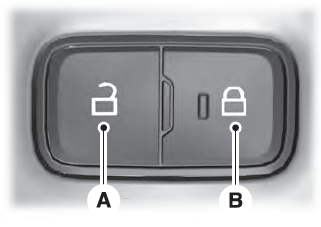Lincoln Aviator: Intake Air Distribution and Filtering - 3.0L EcoBoost/3.0L EcoBoost – Hybrid (BQ) / General Procedures - Charge Air Cooler (CAC) Cleaning
Cleaning
-
Remove the Turbocharger Boost Pressure (TCBP) sensor from the CAC.
Refer to: Turbocharger Boost Pressure (TCBP) and Charger Air Cooler Temperature (CACT) Sensor (303-14A Electronic Engine Controls - 3.0L EcoBoost/3.0L EcoBoost – Hybrid (BQ), Removal and Installation).
-
NOTICE: Do not use a high-pressure power washer to clean the CAC or damage to the CAC may occur.
NOTE: Drain all contaminates such as coolant, fuel and oil prior to cleaning the CAC.
NOTE: Thoroughly clean the joint clamp areas as well as the turbocharger connection, engine connection and the CAC connections, using metal brake parts cleaner.
Lay the CAC flat with the inlet and outlet ports pointing up.
-
NOTE: Plug or cap the CAC openings prior to agitating.
-
Add an appropriate amount of commercially available
detergent cleaner such as Simple Green Pro HD, or equivalent to the CAC. Follow the manufacturer's directions for cleaning. Fill the CAC to 40% of its volume with water.
-
Raise one end of the CAC and agitate it by hand for at least 5 minutes.
-
Raise the opposite end of the CAC and agitate it by hand for at least 5 minutes.
-
Drain the CAC.
-
Flush the CAC thoroughly with clean water.
-
Repeat Steps 2 through 8 until no contaminates are found in the flush water.
-
Allow the CAC to air dry.
-
NOTE: The following leak test steps must be performed prior to installing the CAC.
Install the Turbocharger Boost Pressure (TCBP) sensor on the CAC.
Refer to: Turbocharger Boost Pressure (TCBP) and Charger Air Cooler Temperature (CACT) Sensor (303-14A Electronic Engine Controls - 3.0L EcoBoost/3.0L EcoBoost – Hybrid (BQ), Removal and Installation).
-
NOTE: Use a commercially available kit, such as the Johnson Manufacturing Company Charge Air Cooler Test Set Part No. 351-CAS, or equivalent.
Install the commercially available cooler tester on the CAC following the manufacturer's installation instructions.
-
Tighten the clamps.
Torque: 44 lb.in (5 Nm)
-
Slowly apply air pressure..jpg) WARNING:
Never exceed the specified pressure. Excessive
pressure may cause the test adapter to blow off or may damage the charge
air cooler (CAC). Failure to follow this instruction may result in
serious personal injury.
WARNING:
Never exceed the specified pressure. Excessive
pressure may cause the test adapter to blow off or may damage the charge
air cooler (CAC). Failure to follow this instruction may result in
serious personal injury.
Pressure: 21.8 psi ( 150 kPa)
-
Let the CAC stand for a few minutes and note any loss in pressure.
-
Release the air pressure.
-
Repeat Steps 14 through 16 as many times as necessary to
verify the readings. The reading is considered verified when 3
consecutive tests show approximately the same pressure drop.
-
If the pressure loss exceeds 10 kPa (1.5 psi) per minute, install a new CAC.
Refer to: Charge Air Cooler (CAC) (303-12 Intake Air Distribution and Filtering - 3.0L EcoBoost/3.0L EcoBoost – Hybrid (BQ), Removal and Installation).
 Diagnosis and Testing - Intake Air Pressure and Temperature
Diagnosis and Testing - Intake Air Pressure and Temperature
Diagnostic Trouble Code (DTC) Chart
Diagnostics in this manual assume a certain skill level and knowledge of Ford-specific diagnostic practices.REFER to: Diagnostic Methods (100-00 General Information, Description and Operation)...
 Removal and Installation - Air Cleaner
Removal and Installation - Air Cleaner
Removal
NOTICE:
The turbocharger compressor vanes can be damaged by even the
smallest particles. When removing any turbocharger or engine air intake
system component, ensure that no debris enters the system...
Other information:
Lincoln Aviator 2020-2025 Owners Manual: Gauges
Note: Clusters shown in single gauge view. Note: Displays may appear slightly different depending on region. Status Bar. Speedometer. Information on demand. Vehicle driving range. Fuel and battery gauges. Engine coolant temperature gauge. Tachometer...
Lincoln Aviator 2020-2025 Owners Manual: Towing the Vehicle on Four Wheels
Emergency Towing WARNING: If your vehicle has a steering wheel lock make sure the ignition is in the accessory or on position when being towed. If your vehicle becomes inoperable without access to wheel dollies or a vehicle transport trailer, it can be flat-towed with all wheels on the ground, regardless of the powertrain and transmission configuration, under the following conditions: Your vehicle is facing forward for towing in a forward direction...
Categories
- Manuals Home
- Lincoln Aviator Owners Manual
- Lincoln Aviator Service Manual
- Drive Modes
- Wireless Accessory Charger (If Equipped)
- Child Safety Locks
- New on site
- Most important about car
Locking and Unlocking the Doors from Inside

Locking the Doors
Press the lock switch on the door interior trim panel. The doors can no longer be released using the exterior door handle switches and the luggage compartment locks.
